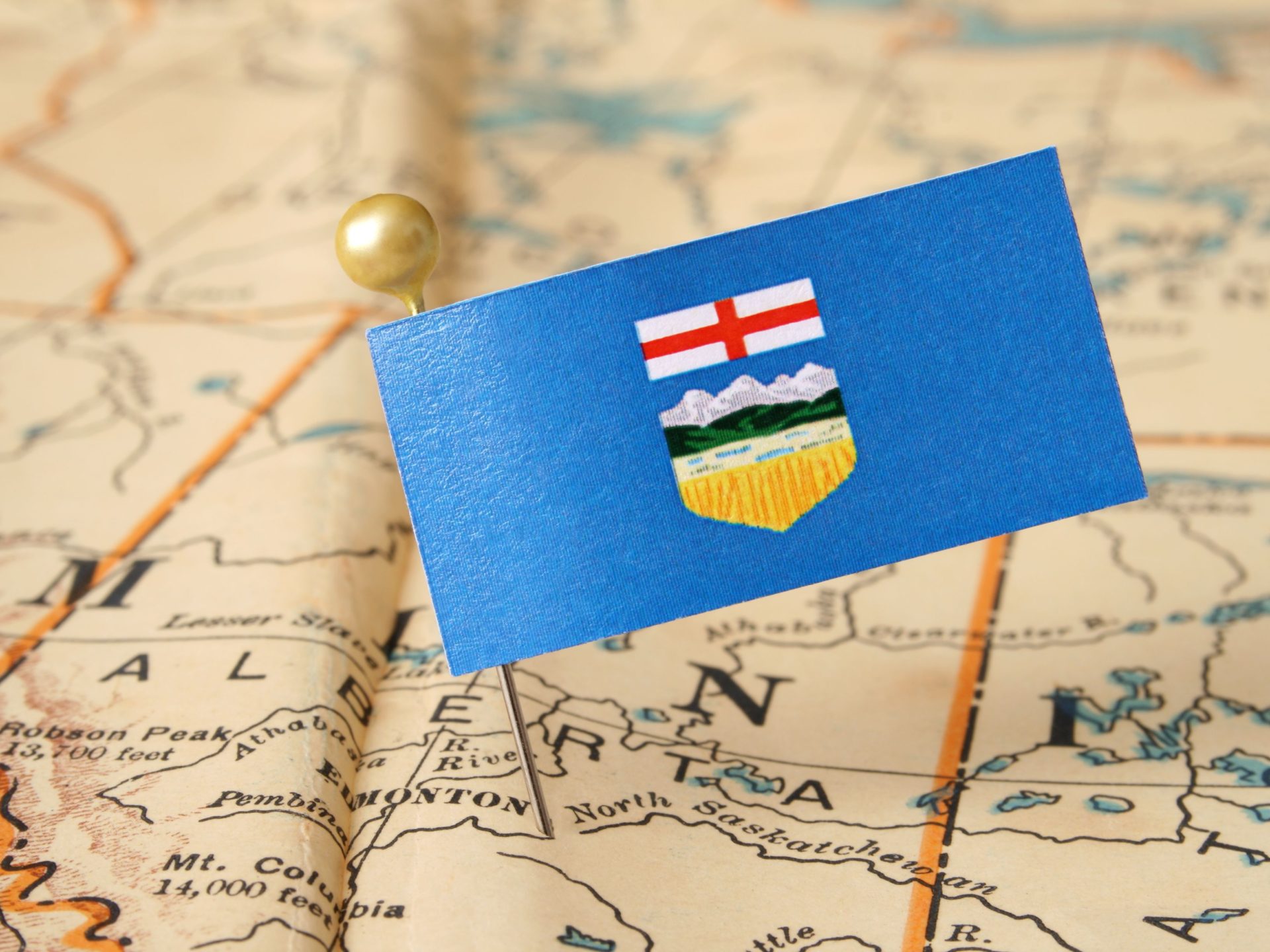
Table of Contents
Synopsis: The province is already doing its part to improve its environmental track record.
Wexit, a movement promoting the secession of Western Canada from the rest of the country, has been gaining steam. A namesake party recently applied for Wexit Canada’s registration at the federal level. At the provincial level, the party is working on obtaining political party status in Alberta, British Columbia and Saskatchewan – and eventually, Manitoba. Once these milestones are achieved, Wexit will look to participate in the federal elections and present its demands—which include abolishing the carbon tax and ending lopsided equalization payments to the Eastern Provinces and the government in Ottawa.
The Western provinces have long felt that their interests did not align with those of Eastern Canada, particularly when viewed through the lens of natural resource extraction, timber and lumber, prairie farming and especially oil and gas. A disproportionate amount of GDP wealth is generated by the Western provinces, while the Eastern provinces siphon the revenue.
See: Equalization Payments Chart:
https://twitter.com/premierscottmoe/status/1009071801081712642
The disconnect between Eastern and Western Canada started in the 1970s under the government of then-Prime Minister Pierre Elliott Trudeau, via his then-famous National Energy Program. Subsequently, Justin Trudeau’s government has been slow to bring much-needed pipeline capacity online.
At the same time, Western Canada oil sands production has been vilified – often by its Eastern beneficiaries – while its contributions to addressing climate change, via cleaner extraction methods and extensive investment in natural habitat reclamation, have been minimized. Canada’s oil sands created only 0.15% of total global emissions in 2016. Western Canadians are therefore justified in seeking strong political protection for their continued extraction to protect the jobs in the field.
The aims of Wexit in Alberta, where the movement is most developed, include:
Corporate tax in Alberta would be reduced to 7%, while personal income tax would be limited to a maximum of 19%.
Instituting “punitive sanctions” for the breaking of election promises.
Confederation with other provinces only if approved by Albertans through a referendum
Introduction
Wexit is a secession movement of the Western Canadian provinces—Alberta, Manitoba, British Columbia and Saskatchewan—that arose as a response to what Western Canadians see as the “submission” of the West to the Justin Trudeau government “through economic destruction leading to poverty and reliance on the government”. These provinces have grown thanks to the booming oil and gas industry, and they feel that the federal government does not have their best interests in mind.
The movement leaders have recently applied for Wexit Canada’s registration as a political party. At the provincial level, the Wexit party is working on obtaining political party status in Alberta, British Columbia and Saskatchewan. Once party status is obtained, Wexit would look to participate in the federal elections and present its demands to the government. They include abolishing the carbon and federal income taxes.
If the federal government refused to consider the policies of the seated Wexit party members, that would be considered proof that it has no interest in addressing key Western grievances and would justify an official push toward the separation of one or more Western provinces.
Canada has some of the most stringent oil and gas production standards in the world. If less oil is produced there, more will be produced by nations with less-than-stellar human rights and environmental records.
What are Wexit’s objectives?
In general, however, Wexit proponents seek (http://wexitsask.com/wexit-the-plan.pdf) “peaceful separation” with a goal to “allow the West to develop its natural resources, economy and culture without interference from Eastern Canada and/or foreign special interests.”
Some of the objectives Wexit supporters look to implement in Alberta include the following:
Simultaneously, as the traditional financial and banking system becomes increasingly chaotic as a result of potentially unstable fiat currencies, it is likely that alternative forms of business financing – factoring, supply chain financing, asset-based lending and revenue-based lending by private lenders (driven by new fintech models) – will flourish.
- Limiting personal income tax to a maximum of 19%
- Reducing corporate taxes to 7%
- Withdrawing from the Paris Accord and Agenda 2030
- Instituting public school curriculums that “teach the importance of Alberta’s energy industry”
- Usage of a resources-backed Alberta National currency
- Instituting “punitive sanctions” for the breaking of election promises
- Passing regulations related to employee safety, as well as “prevention and reclamation” related to soil, air or water pollution.
- Confederation with other provinces only if approved by Albertans through a referendum.
When did Wexit come about?
The origins of Wexit are rooted in what many Western Canadians view as unfair federal government oil and gas policies.
Western Canadians’ discontent started in the 1970s under the government of then-Prime Minister Pierre Elliott Trudeau and his National Energy Program (NEP). The NEP’s key element was double taxation which redistributed the oil revenue from the West to the East through equalization and tax payments. Many people in the West pushed back against the program, because they felt that it was designed to strip the Western provinces of their natural wealth.
These concerns were compounded after the 2015 election of Justin Trudeau as Prime Minister. Many in Western Canada felt that the severity of the pipeline delays was not being taken seriously by a federal government that was distant and removed from the problems of Western Canadians. Because of the delays, in the fall of 2018, Western Canadian Select (WCS) — the main oil grade produced in Western Canada — fell dramatically in price compared to its American equivalent grade. This has had a negative impact on the Western provincial economies that are heavily reliant on oil and gas.
While significant progress has been made on the pipelines recently, the recent re-election of a Trudeau minority government — one that relies on parties opposed to the oil and gas sector to pass legislation — has renewed fears of further delays and brought old grievances to the forefront.
A disproportionate amount of GDP wealth is generated by the Western provinces, while the Eastern provinces siphon the revenue.
What would be the impact of shuttering oil and gas production?
To understand the seriousness of the situation for many Western Canadians, it is useful to take into account recent calls to eliminate Canada’s oil and gas production altogether, including those by teen climate change activist Greta Thunberg (who visited Edmonton, Alberta in October).
This would have a devastating impact on Western Canada’s economy and the livelihood of the workers in the sector, which has already been hit hard by a wave of oil- and gas-related bankruptcies, layoffs and other adverse events. The energy industry in Canada employed around 1 million people in 2018. Alberta’s oil and gas industry contributed (https://en.wikipedia.org/wiki/Economy_of_Alberta) $71.5 billion to Canada’s 2018 nominal gross domestic product (GDP).
Furthermore, despite being a favorite target of environmental activists, the reality of oil sands production is more nuanced:
- Canada has some of the most stringent production standards in the world. If less oil is produced there, more will be produced by nations with less-than-stellar human rights and environmental records.
- Canada as a whole represents less than 1.5% of the world’s total greenhouse gas emissions. In 2016, Canada’s oil sands created only 0.15% of total global emissions.
- Alberta is already doing its part in combating climate change. As the leader of the pro-oil sands nonprofit Canada Action Cody Battershill said in an October 2019 Edmonton Journal article:
- “Greta [Thunberg] will want to learn during her visit that Alberta is home to Western Canada’s largest wind farm and the future location of Canada’s largest solar installation. She’d recognize our sparsely populated country ranks ninth for installed wind capacity globally, while our province was the site of Canada’s first wind farm way back in 1994.
- “Greta’s Alberta tour is the perfect occasion for her to understand how fully 82 per cent [sic] of Canada’s electricity comes from non-emitting sources — a fact that places us among the highest percentages throughout the world. And she’ll learn in Alberta that Canada ranks fourth globally on the clean-tech index with a dozen of our companies listed in the top 100.”
Conclusion
Wexit—the secession of Western Canada from the rest of the country—has recently been gaining steam again as Justin Trudeau’s government has been slow to bring much-needed pipeline capacity online. Despite the fact that Canada has one of the most stringent production standards in the world and the oil sands’ products fairly low emission rates, international pressure to shutter oil and gas production in Western Canada has been mounting. Given that the sector is a major employer in the provinces, this puts the livelihood of many Western Canadians at risk. Many of them feel that, even though they make equalization payments and pay taxes, their needs are not being met. Given the intense (and well-funded) international pressure to sideline the Canadian oil and gas industry, Western Canadians’ desire for a strong political will to protect the provincial economies is likely to grow stronger over time.
Calgary-based working capital provider Business Factors & Finance is a proud supporter of the oil and gas industry in Western Canada. We offer specialized working capital solutions for small and medium-sized businesses in all industries across Canada, including oil and gas. To learn more, please visit getstarted.calgaryfactors.com.

Improve Your Cash Position
Get a Risk-Free quote from Business Factors for immediate working capital and 24/48 hour invoice factoring


 Since 1991 I specialize in Invoice Factoring, PO financing and ABL facilities. I currently work internationally with companies in the US and Canada via our internet marketing division. Specialties: Accounts Receivable Factoring and Payroll Funding for Manufacturing, Oil & Gas, Telecommunications, Wholesale Trade Distribution, Staffing and Transportation. I always enjoy helping companies rise to the next level of success.
Since 1991 I specialize in Invoice Factoring, PO financing and ABL facilities. I currently work internationally with companies in the US and Canada via our internet marketing division. Specialties: Accounts Receivable Factoring and Payroll Funding for Manufacturing, Oil & Gas, Telecommunications, Wholesale Trade Distribution, Staffing and Transportation. I always enjoy helping companies rise to the next level of success.
